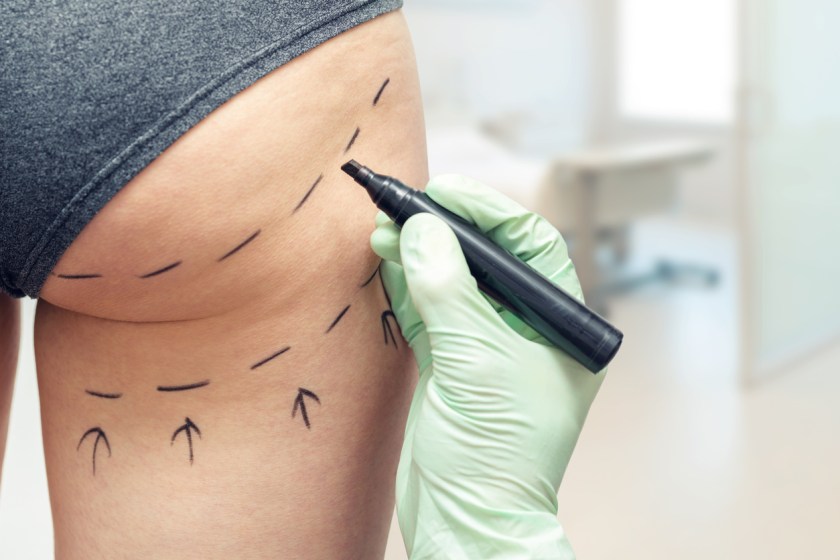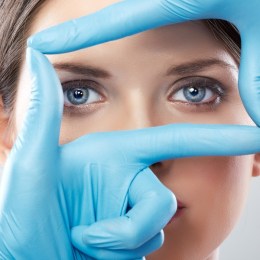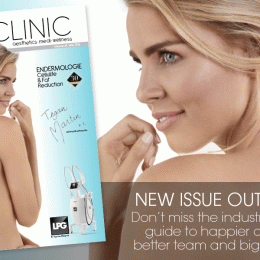In 2020, the International Society of Aesthetic Plastic Surgery reported that the number of butt lifts performed globally increased by 77.6% since 2015.5
The Brazilian Butt Lift (BBL) has been one of the most talked about cosmetic surgeries over the past few years. Thanks in part to celebrities like the Kardashians, the procedure has gained considerable popularity and made the news once again in the recent Mirror Mirror docuseries on Channel Ten.
However, despite being one of the most trending procedures of the moment, the Australasian College of Cosmetic Surgery and Medicine (ACCSM) is warning of the dangers of BBL surgery and the rise of Body Dysmorphic Disorder (BDD) as outlined in the docuseries. Speaking on behalf of the ACCSM, President Dr Patrick Tansley shared the college’s concerns and a call for physicians to stop performing dangerous BBLs and implement better BDD screening practices.
Can you talk us through what BBLs involve?
Brazilian Butt Lift (BBL) surgery (also known as Gluteal Fat Grafting) involves augmentation of the buttocks to enhance volume and shape. This is undertaken by means of a fat grafting technique (also known as Autologous Fat Grafting) which uses a patient’s own fat cells.
The procedure should be performed by an appropriately trained and qualified surgeon under a general anaesthetic administered by a specialist anaesthetist in an accredited hospital. It involves harvest of the fat to be grafted from donor sites which may include the abdomen, flanks and thighs using modified liposuction techniques.
The fat graft is then prepared to eliminate blood and fibrous tissue before being injected using a cannula into the graft recipient site (the buttocks) via a series of small incisions.
The fat graft cells survive following a process of graft ‘take’ which is similar to skin, bone or cartilage grafts. The graft ‘take’ process involves the establishment of a blood supply to nourish the grafted fat cells. The degree of fat graft take varies based on the Surgeon’s training, experience and technique used, in addition to individual patient factors including for example, cigarette smoking. I counsel patients that whilst individual variations of graft take can be expected, approximately two-thirds fat graft take is a reasonably conservative estimate. Fat graft which fails to ‘take’ is either reabsorbed by the body or can form lumps known as fat necrosis or oil cysts.
As with all autologous fat graft surgery including breast and facial fat grafting, when the procedure is performed by a Surgeon specifically trained in cosmetic surgery, the results ought also to include improvement in appearance of the donor site given the liposuction techniques used for fat graft harvest.
Why does ACCSM advise against the performance of BBL procedures?
The mortality (death) rate after BBL surgery has been estimated at between 1:1600 to 1:3000 cases in the scientific literature.1 This is the highest such death rate of any cosmetic operation and it is considered unacceptably high. The ACCSM has called on cosmetic and plastic surgeons to consider the safety of their patients and decline to perform BBL procedures2.

This advice is consistent with that of the International Society of Aesthetic Plastic Surgery which also in 2019 issued a ‘Gluteal Fat Safety Advisory’ communicating that it was ‘extremely concerned about the mortalities associated with gluteal fat grafting (BBL) procedures that continue to be reported in the United States and other countries’ adding that ‘The mortality rate for gluteal fat grafting is estimated to be the highest known for any cosmetic procedure. The Societies urge both members and the public to approach this procedure with extreme caution.’3
Whilst there may now be some emerging evidence of improvement in degree of associated risk by means of improved understanding and associated techniques, the procedure should still be considered with extreme caution.4 The main cause of death is considered to be due to pulmonary fat embolism resulting from inadvertent injection of fat cells under pressure into the relatively low pressure gluteal veins located deep to the gluteal muscles in the buttock as a consequence of inadvertent damage to those veins. Other causes of death include severe infection. There is also evidence in the scientific literature of long-term health issues caused by non-fatal pulmonary fat embolism including permanent or chronic pulmonary morbidity.1
Do you think better training options for surgeons could help make the procedure safer?
Specialised training specifically in cosmetic surgery can help make all cosmetic operations, including BBL surgery safer.6,9 Technical advancements and modifications to surgical techniques can further improve safety, such as using single-hole larger calibre (>4mm) blunt ended cannulae and remaining in the subcutaneous plane during fat injection so as to avoid deep injection risking damage to the gluteal veins. However, despite such considerations, risk is not eliminated.
Requests for BBLs and the rise of BDD seem to go hand in hand. How can practitioners be appropriately screening patients seeking these extreme procedures to ensure mental health is a priority?
Whilst the prevalence of Body Dysmorphic Disorder (BDD) is estimated to be around 2% of the general population, importantly 15-20% of those seeking cosmetic interventions, both surgical and non-surgical suffer from BDD.10,11 Therefore, all cosmetic practitioners need to consider the potential diagnosis of BDD in the interests of patient well-being.
The ACCSM considers that high standards of practitioner training and education is the cornerstone of appropriate patient screening in regard to all cosmetic surgical and non- surgical procedures, not only those considered extreme. Such screening of patients by application of related tools such as BDD-q or appropriate alternatives, allow practitioner recognition of the potential diagnosis of BDD and thereby facilitate referral for psychological or psychiatric opinion prior to consideration of any cosmetic procedure.
How is the college helping to raise awareness of BDD and give surgeons the tools to screen for and manage cases?
As the ACCSM is the only organisation in Australia which trains, examines and re-certifies practitioners specifically in cosmetic surgery and medicine and has done so for almost thirty years, it is well placed to raise awareness of BDD.
Accordingly, given the high prevalence of BDD in cosmetic practice, the ACCSM has collaborated with the Butterfly Foundation and is committed to the use of appropriate patient screening tools by its Fellows and ongoing related research in the scientific literature, currently in press.12
References
- Mofid MT, S. Suissa, D. Ramirez-Montanana, A. Astarita, D. Medieta, C. Singer, R. Report on Mortality from Gluteal Fat Grafting: Recommendations from the ASERF Task Force. Aesthetic Surgery Journal. 21 March 2017.
- ACCS. Media Statement. Australians cautioned: Brazilian Butt-lifts can kill. Industry needs accreditation. 5 November 2019.
- ISAPS. Gluteal Fat Safety Advisory. 12 June 2019.
- RealSelf. New Study Shows the Brazilian Butt Lift Is No Longer the Most Dangerous Procedure in Plastic Surgery—With One Caveat. 23 August 2021.
- ISAPS annual Global Survery on Aesthetic/Cosmetic Procedures 2019. 8 December 2020.
- Tansley P. Opinion Piece – Cosmetic surgery industry must be reviewed as demand surges: Patrick Tansley. Herald Sun. 22 December 2020.
- Tansley P. Opinion Piece – Standards need to lift in cosmetic surgery. Herald Sun. 23 December 2020.
- Tansley P. Opinion Piece – Knowledge and the Knife. The Daily Telegraph. 24 November 2020.
- Tansley P, Hodgkinson D, Brown T. Letter to the Editor by Patrick Tansley, Darryl Hodgkinson and Tim Brown Reply to “Defining Plastic, Reconstructive, Aesthetic, and Cosmetic Surgeries. What Can Get Lost and Found in Translation” by Xian Wei, Bin Gu, Qingfeng Li. Ann Plast Surg. 2020.
- Bartsch D. Prevalence of body dysmorphic disorder symptoms and associated clinical features among Australian university students. Clinical Psychologist. 2007;11(1):16- 23.
- Bouman TK, Mulkens S, van der Lei B. Cosmetic Professionals’ Awareness of Body Dysmorphic Disorder. Plast Reconstr Surg. 2017;139(2):336-342.
- Tran P. Tong L. Vallance J. CFBR. Body Dysmorphic Disorder – Awareness Amongst Cosmetic Professionals. Journal of Cosmetic Surgery and Medicine. In Press.
DID YOU KNOW
There are 5 ways you can catch up with SPA+CLINIC?
- Our quarterly print magazine, delivered to your door. Subscribe here.
- Our website, which is updated daily with its own completely unique content and breaking news.
- Our weekly newsletter – free to your inbox! Subscribe here.
- Our digital magazine – click here to view previous issues.
- Our social media – see daily updates on our Instagram, Facebook & Linkedin





